
You’re invited on a distinctive small group journey through the Iberian Peninsula to the intimate lodgings of Spain’s paradores and Portugal’s pousadas: medieval monasteries, historic fortresses, and stately palaces, each reflecting the spirit of its region. We feel the spell of Iberia’s rich Roman and Moorish past – and the pull of its vibrant contemporary life.
From $5,274


You’re invited on a distinctive small group journey through the Iberian Peninsula to the intimate lodgings of Spain’s paradores and Portugal’s pousadas: medieval monasteries, historic fortresses, and stately palaces, each reflecting the spirit of its region. We feel the spell of Iberia’s rich Roman and Moorish past – and the pull of its vibrant contemporary life.
Click on this icon in the Dates and Prices section below to view the hotel summary for selected departure date
Ratings are based on the Hotel & Travel Index, the travel industry standard reference
Day Day Itinerary Hotel Rating |
1 1 Depart U.S. for Lisbon |
2-3 |
4-5 |
6-8 |
9-10 |
11 |
12-14 |
15 15 Depart Madrid for U.S. |
| 1 | Depart U.S. for Lisbon, Portugal Depart U.S. for Lisbon, Portugal |
| 2 | Arrive Lisbon D D Arrive Lisbon Read More We arrive in the Portuguese capital and transfer to our hotel. As guests’ arrival times vary, we have no group activities planned during the day. Tonight we enjoy a welcome dinner. We arrive in the Portuguese capital and transfer to our hotel. As guests’ arrival times vary, we have no group activities planned during the day. Tonight we enjoy a welcome dinner. |
| 3 | Lisbon B B Lisbon Read More This morning’s city tour includes the Jerónimos Monastery, a masterpiece of Manueline architecture; iconic Belém Tower; and the Monument to the Discoveries commemorating Portugal’s storied explorers. Then we take a guided walk around Figueira Square in the Baixa district, Lisbon’s vital heart. Our tour ends by the historic Alfama neighborhood, with the afternoon free to explore as we wish. This morning’s city tour includes the Jerónimos Monastery, a masterpiece of Manueline architecture; iconic Belém Tower; and the Monument to the Discoveries commemorating Portugal’s storied explorers. Then we take a guided walk around Figueira Square in the Baixa district, Lisbon’s vital heart. Our tour ends by the historic Alfama neighborhood, with the afternoon free to explore as we wish. |
| 4 | Lisbon/Evora B L D B L D Lisbon/Evora Read More This morning, we travel through the rolling hills of the agricultural Alentejo district, with its bountiful fields of wheat, fragrant vineyards, and stands of olive and cork trees. We stop for lunch outside of hilltop Monsaraz, then head to a local winery, where we learn about the wine making tradition in this region, enjoy stunning views of the vineyards, and of course, sample the delicious wine. Late afternoon we arrive in Evora, capital of the Alentejo and site of our pousada. A restored 15th-century convent, Pousada dos Loios is considered one of the most beautiful lodgings in Portugal and the country’s finest pousada. This morning, we travel through the rolling hills of the agricultural Alentejo district, with its bountiful fields of wheat, fragrant vineyards, and stands of olive and cork trees. We stop for lunch outside of hilltop Monsaraz, then head to a local winery, where we learn about the wine making tradition in this region, enjoy stunning views of the vineyards, and of course, sample the delicious wine. Late afternoon we arrive in Evora, capital of the Alentejo and site of our pousada. A restored 15th-century convent, Pousada dos Loios is considered one of the most beautiful lodgings in Portugal and the country’s finest pousada. |
| 5 | Evora B L B L Evora Read More Our morning walking tour of Evora introduces us to the many charms of this architectural gem – a university town, prosperous regional capital, and UNESCO site, thanks to the many relics of its Roman and Moorish heritage. The tour includes a Roman temple; the Cathedral of Evora, built in the late 12th century; Giraldo Square, one of Evora’s primary town centers; and the Church of St. Francis, home of the Chapel of Bones. After lunch together, the afternoon is at leisure to enjoy this “Golden Age” city as we wish. Our morning walking tour of Evora introduces us to the many charms of this architectural gem – a university town, prosperous regional capital, and UNESCO site, thanks to the many relics of its Roman and Moorish heritage. The tour includes a Roman temple; the Cathedral of Evora, built in the late 12th century; Giraldo Square, one of Evora’s primary town centers; and the Church of St. Francis, home of the Chapel of Bones. After lunch together, the afternoon is at leisure to enjoy this “Golden Age” city as we wish. |
| 6 | Evora/Mérida, Spain/Carmona B D B D Evora/Mérida, Spain/Carmona Read More Today we travel east through countryside peppered with the ruins of fortresses and castles to the Spanish border town of Mérida. Once the capital of ancient Lusitania (Latin for the kingdoms of Spain and Portugal), Mérida boasts more Roman ruins than any other town in Spain. There’s time to explore and eat lunch on our own before we continue on to Carmona and our parador, a restored 14th-century Arab fortress built on the site of the medieval castle of Peter of Castile. Today we travel east through countryside peppered with the ruins of fortresses and castles to the Spanish border town of Mérida. Once the capital of ancient Lusitania (Latin for the kingdoms of Spain and Portugal), Mérida boasts more Roman ruins than any other town in Spain. There’s time to explore and eat lunch on our own before we continue on to Carmona and our parador, a restored 14th-century Arab fortress built on the site of the medieval castle of Peter of Castile. |
| 7 | Carmona/Seville B B Carmona/Seville Read More This morning we visit splendid Seville, Moorish capital of Spain’s Andalusia region and city of beauty and romance. This is the place that inspired Carmen and Don Giovanni and where fragrant orange trees and flower-bedecked balconies delight the senses. It is also home of the renowned Catedral, the world’s largest Gothic building. After a tour that includes Alcázar, the palace noted for its signature mudejar (Moorish) architecture, and the Arab quarter, the afternoon is free to explore independently. We return to Carmona late this afternoon and dinner is on our own this evening. This morning we visit splendid Seville, Moorish capital of Spain’s Andalusia region and city of beauty and romance. This is the place that inspired Carmen and Don Giovanni and where fragrant orange trees and flower-bedecked balconies delight the senses. It is also home of the renowned Catedral, the world’s largest Gothic building. After a tour that includes Alcázar, the palace noted for its signature mudejar (Moorish) architecture, and the Arab quarter, the afternoon is free to explore independently. We return to Carmona late this afternoon and dinner is on our own this evening. |
| 8 | Carmona/Cordoba B D B D Carmona/Cordoba Read More Within its small confines, Cordoba boasts four UNESCO-designated World Heritage attractions, giving it the world's highest concentration of such treasures in one city. And today’s visit to this cultural gem promises to be special indeed. First the capital of Roman Spain, then of Moorish Spain, Cordoba features some of the country’s most important monuments, including the Old Quarter built around the magnificent Mezquita mosque. It was here that the Moors ruled from the 8th to the 11th centuries and fostered a culture of learning and religious harmony known the world over. Our walking tour takes in many of the highlights, including the atmospheric Old Quarter with its narrow, winding streets, whitewashed houses, and revered Mezquita Mosque-Cathedral. With more than 500 columns and graceful arches, the Mezquita incorporates Roman and Gothic elements into its architecture. Cordoba also is home to Andalusia’s only synagogue to survive the expulsion of Spain’s Jews in the 15th century. After touring these and other highlights, we have free time to explore on our own. Late this afternoon we return to our parador, where we dine tonight. Within its small confines, Cordoba boasts four UNESCO-designated World Heritage attractions, giving it the world's highest concentration of such treasures in one city. And today’s visit to this cultural gem promises to be special indeed. First the capital of Roman Spain, then of Moorish Spain, Cordoba features some of the country’s most important monuments, including the Old Quarter built around the magnificent Mezquita mosque. It was here that the Moors ruled from the 8th to the 11th centuries and fostered a culture of learning and religious harmony known the world over. Our walking tour takes in many of the highlights, including the atmospheric Old Quarter with its narrow, winding streets, whitewashed houses, and revered Mezquita Mosque-Cathedral. With more than 500 columns and graceful arches, the Mezquita incorporates Roman and Gothic elements into its architecture. Cordoba also is home to Andalusia’s only synagogue to survive the expulsion of Spain’s Jews in the 15th century. After touring these and other highlights, we have free time to explore on our own. Late this afternoon we return to our parador, where we dine tonight. |
| 9 | Carmona/Ronda B D B D Carmona/Ronda Read More Leaving Carmona this morning, we travel south to tiny Ronda, one of Spain’s oldest and most aristocratic towns. It’s set high in the mountains with whitewashed houses clinging improbably to the edge of El Tajo Gorge – 500 feet deep and 300 feet wide. Leaving Carmona this morning, we travel south to tiny Ronda, one of Spain’s oldest and most aristocratic towns. It’s set high in the mountains with whitewashed houses clinging improbably to the edge of El Tajo Gorge – 500 feet deep and 300 feet wide. |
| 10 | Ronda B L B L Ronda Read More This morning we take a walking tour of Ronda; highlights include the graceful cathedral of Santa Maria Mayor in the town’s Old Quarter, two 17th- and 18th-century bridges, and the Casa de Mondragon, which legend holds was once home to Moorish kings. We return to our parador, Ronda’s original town hall, for a special tapas lunch and then the rest of the day is free for independent exploration. This morning we take a walking tour of Ronda; highlights include the graceful cathedral of Santa Maria Mayor in the town’s Old Quarter, two 17th- and 18th-century bridges, and the Casa de Mondragon, which legend holds was once home to Moorish kings. We return to our parador, Ronda’s original town hall, for a special tapas lunch and then the rest of the day is free for independent exploration. |
| 11 | Ronda/Granada/Úbeda B D B D Ronda/Granada/Úbeda Read More Continuing our journey, we travel today to Granada, the former stronghold of Moorish Spain set in the foothills of the snowcapped Sierra Nevada. The city’s undisputed highlight is the Alhambra, the extraordinary palace of Spain’s last Moorish rulers. Sprawled across a hilltop above the Darro River, the Alhambra commands breathtaking views of the city below, as we see on our afternoon tour of this splendid citadel. We also visit the Granadian-style Generalife, the palace’s acclaimed gardens. Late this afternoon we travel north to Úbeda and our next parador, where we dine tonight. Continuing our journey, we travel today to Granada, the former stronghold of Moorish Spain set in the foothills of the snowcapped Sierra Nevada. The city’s undisputed highlight is the Alhambra, the extraordinary palace of Spain’s last Moorish rulers. Sprawled across a hilltop above the Darro River, the Alhambra commands breathtaking views of the city below, as we see on our afternoon tour of this splendid citadel. We also visit the Granadian-style Generalife, the palace’s acclaimed gardens. Late this afternoon we travel north to Úbeda and our next parador, where we dine tonight. |
| 12 | Úbeda/Toledo/Madrid B B Úbeda/Toledo/Madrid Read More A highlight is in store today as we visit Toledo, capital of medieval Spain. Declared a Spanish National Landmark, the city is little changed visually from its 16th-century days as a subject for the artist El Greco. Toledo boasts an incomparable hilltop setting overlooking the Castillian plains and surrounded on three sides by the Tagus River. After lunch on our own, we see Toledo’s most important sights on our guided tour, including the massive Gothic Cathedral, begun in 1226 and not finished until 1493, and the Sinagoga del Tránsito, erected in 1357 with imported cedars from Lebanon, just as Solomon requested when constructing the First Temple in Jerusalem. Our tour of Toledo concludes with a stop at Santo Tomé, home of El Greco’s most famous painting: The Burial of Count Orgaz. Then we continue on to Madrid, arriving late this afternoon. Dinner tonight is on our own, perhaps to dine late as the Madrileños do. A highlight is in store today as we visit Toledo, capital of medieval Spain. Declared a Spanish National Landmark, the city is little changed visually from its 16th-century days as a subject for the artist El Greco. Toledo boasts an incomparable hilltop setting overlooking the Castillian plains and surrounded on three sides by the Tagus River. After lunch on our own, we see Toledo’s most important sights on our guided tour, including the massive Gothic Cathedral, begun in 1226 and not finished until 1493, and the Sinagoga del Tránsito, erected in 1357 with imported cedars from Lebanon, just as Solomon requested when constructing the First Temple in Jerusalem. Our tour of Toledo concludes with a stop at Santo Tomé, home of El Greco’s most famous painting: The Burial of Count Orgaz. Then we continue on to Madrid, arriving late this afternoon. Dinner tonight is on our own, perhaps to dine late as the Madrileños do. |
| 13 | Madrid B L B L Madrid Read More Our morning tour of this monumental and dignified capital city includes vast Plaza Mayor, in the heart of Old Madrid; the Moorish medieval district; and either the opulent 18th-century Palacio Real with its 3,400 rooms, or the art-filled Palacio Real de El Pardo. Then we sample some of Madrid’s specialties over a lunch of tapas. Our tour ends at the Prado, one of the world’s greatest museums, displaying treasures by Spanish masters Goya, El Greco, and Velazquez. The remainder of the day is free for independent exploration in this most cosmopolitan city. Well known for its “foodie” culture, Madrid offers a bounty of restaurants for dinner on our own tonight. Our morning tour of this monumental and dignified capital city includes vast Plaza Mayor, in the heart of Old Madrid; the Moorish medieval district; and either the opulent 18th-century Palacio Real with its 3,400 rooms, or the art-filled Palacio Real de El Pardo. Then we sample some of Madrid’s specialties over a lunch of tapas. Our tour ends at the Prado, one of the world’s greatest museums, displaying treasures by Spanish masters Goya, El Greco, and Velazquez. The remainder of the day is free for independent exploration in this most cosmopolitan city. Well known for its “foodie” culture, Madrid offers a bounty of restaurants for dinner on our own tonight. |
| 14 | Madrid B D B D Madrid Read More Today is at leisure to enjoy the Spanish capital as we wish, perhaps to stroll along the city’s broad boulevards, see Picasso’s famed painting Guernica at the Reina Sofia Museum, poke around the weekly El Rastro Market, visit the renowned Thyssen-Bornemisza museum, or simply take in the vibe at a local café. Tonight we bid “adios” to Spain and our fellow travelers at a farewell dinner. Today is at leisure to enjoy the Spanish capital as we wish, perhaps to stroll along the city’s broad boulevards, see Picasso’s famed painting Guernica at the Reina Sofia Museum, poke around the weekly El Rastro Market, visit the renowned Thyssen-Bornemisza museum, or simply take in the vibe at a local café. Tonight we bid “adios” to Spain and our fellow travelers at a farewell dinner. |
| 15 | Depart for U.S B B Depart for U.S Read More We transfer to the airport this morning for our connecting flights to the U.S. We transfer to the airport this morning for our connecting flights to the U.S. |
| Mar | Apr | May | Jun | Sep | Oct | Nov | |
| Lisbon | 62 | 65 | 70 | 76 | 77 | 71 | 63 |
| Seville | 68 | 72 | 80 | 90 | 87 | 77 | 66 |
| Madrid | 59 | 64 | 73 | 84 | 80 | 69 | 56 |
| Mar | Apr | May | Jun | Sep | Oct | Nov | |
| Lisbon | 62 | 65 | 70 | 76 | 77 | 71 | 63 |
| Seville | 68 | 72 | 80 | 90 | 87 | 77 | 66 |
| Madrid | 59 | 64 | 73 | 84 | 80 | 69 | 56 |
Enjoy this bustling seaport, Spain’s cultural and commercial capital, with its medieval Gothic Quarter and popular Ramblas waterfront promenade.
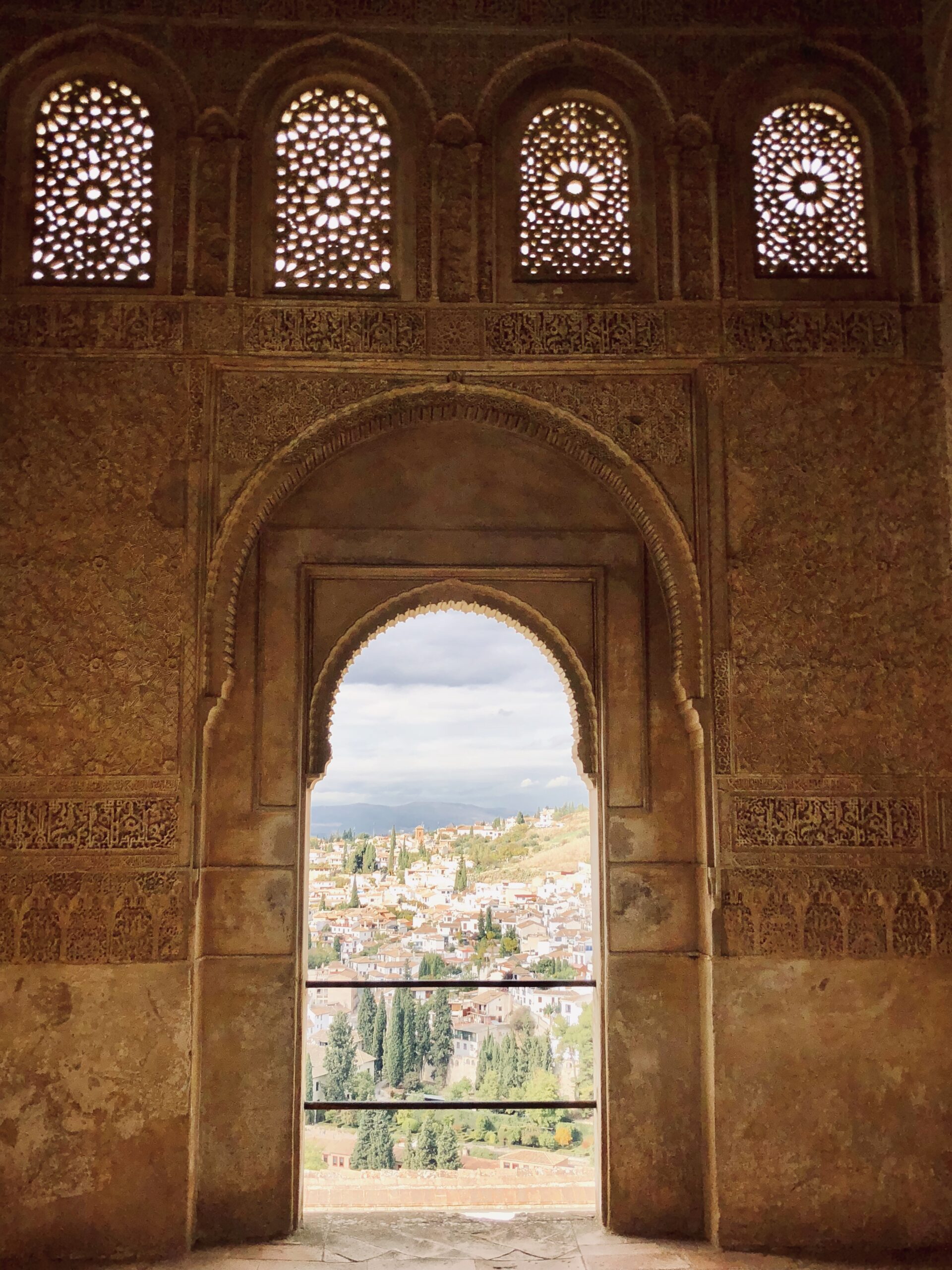
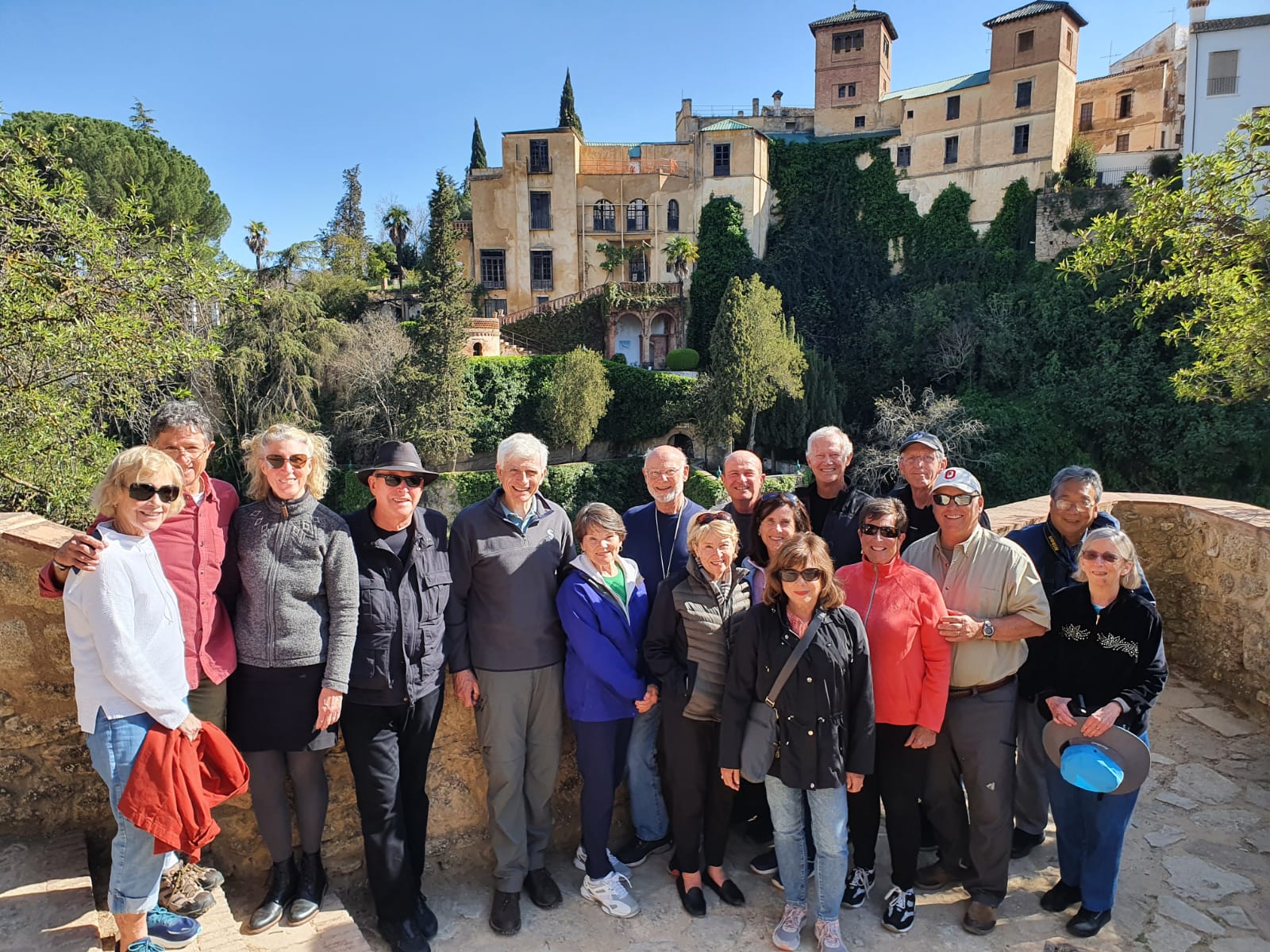
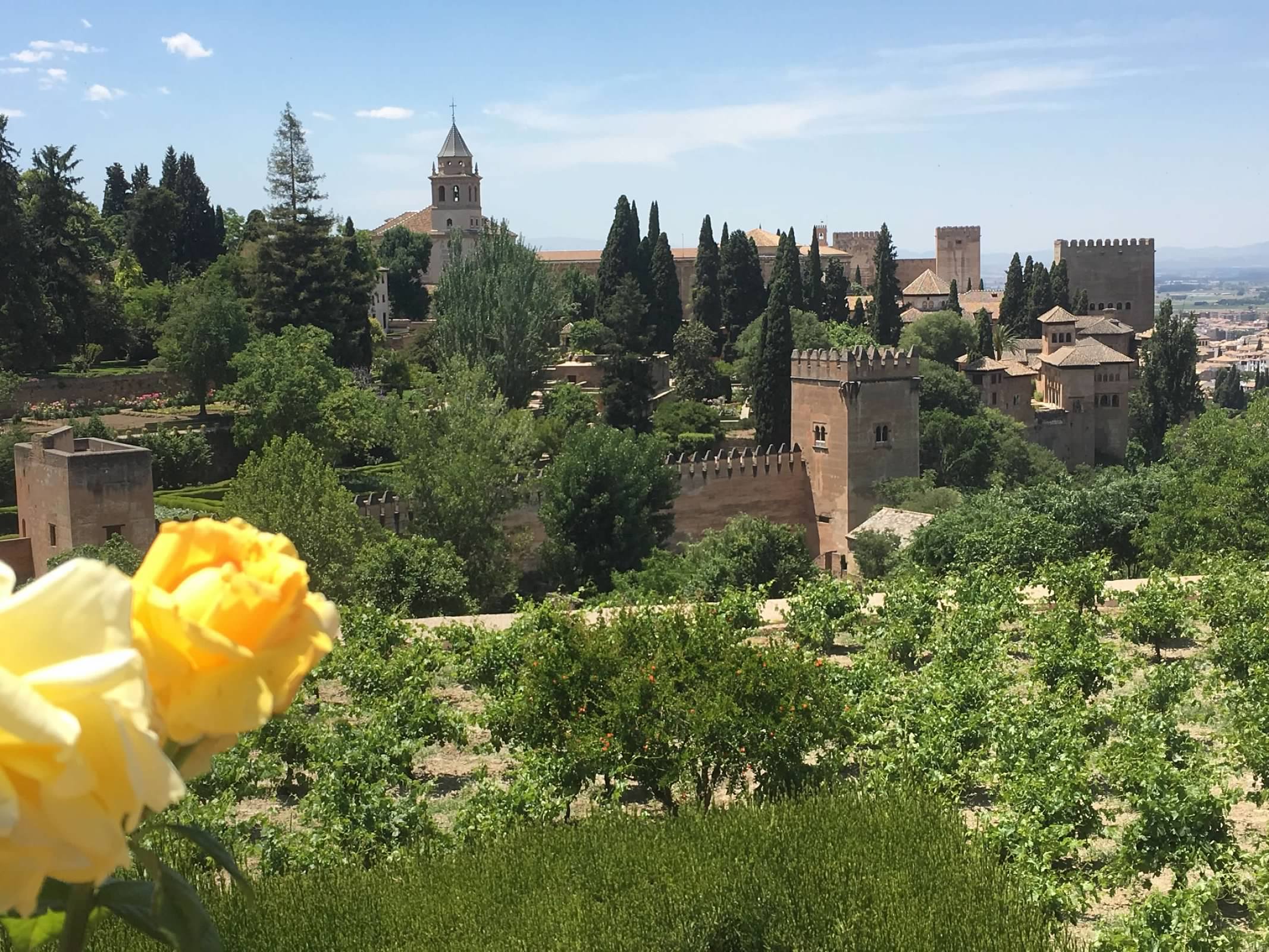
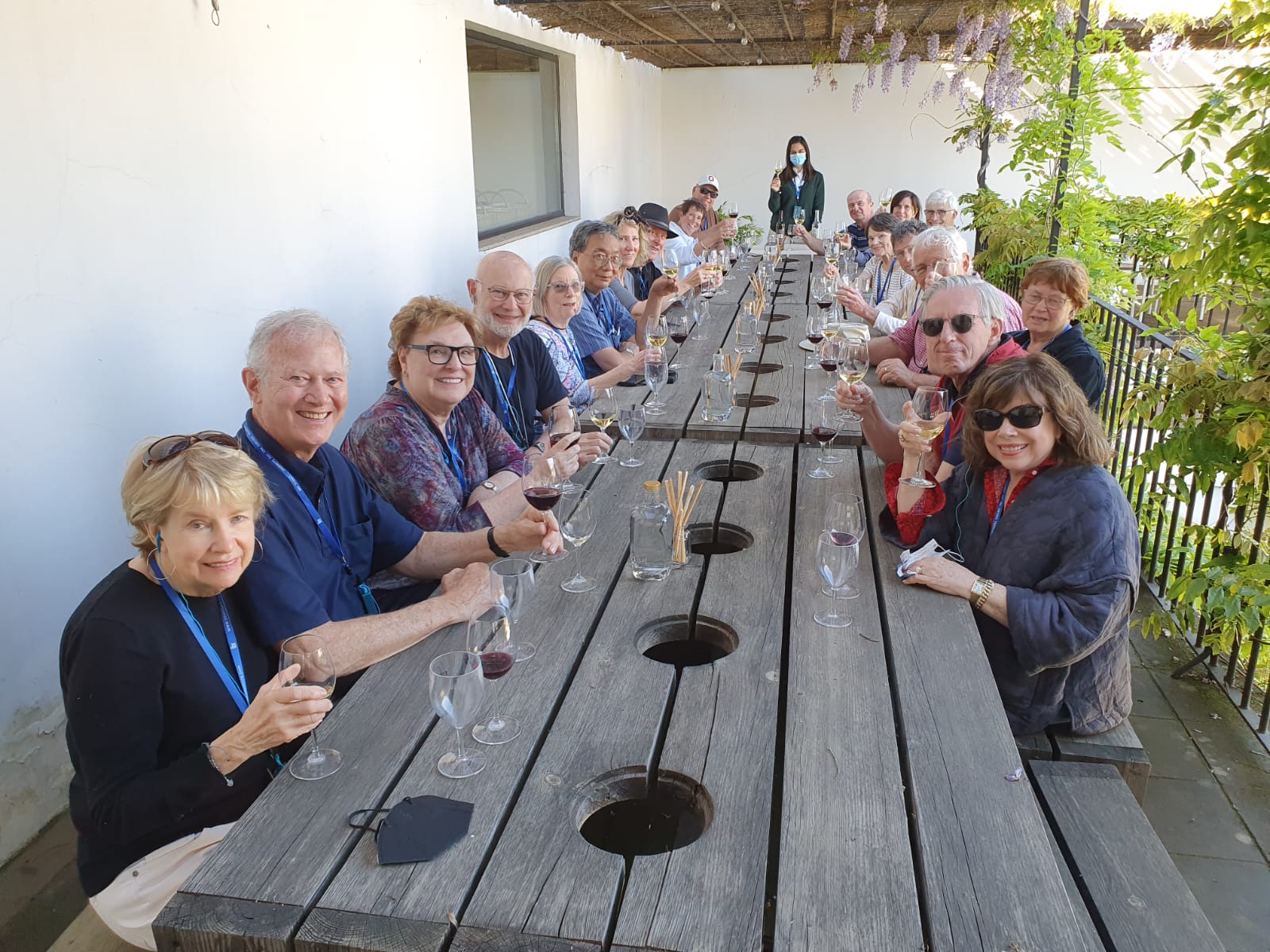
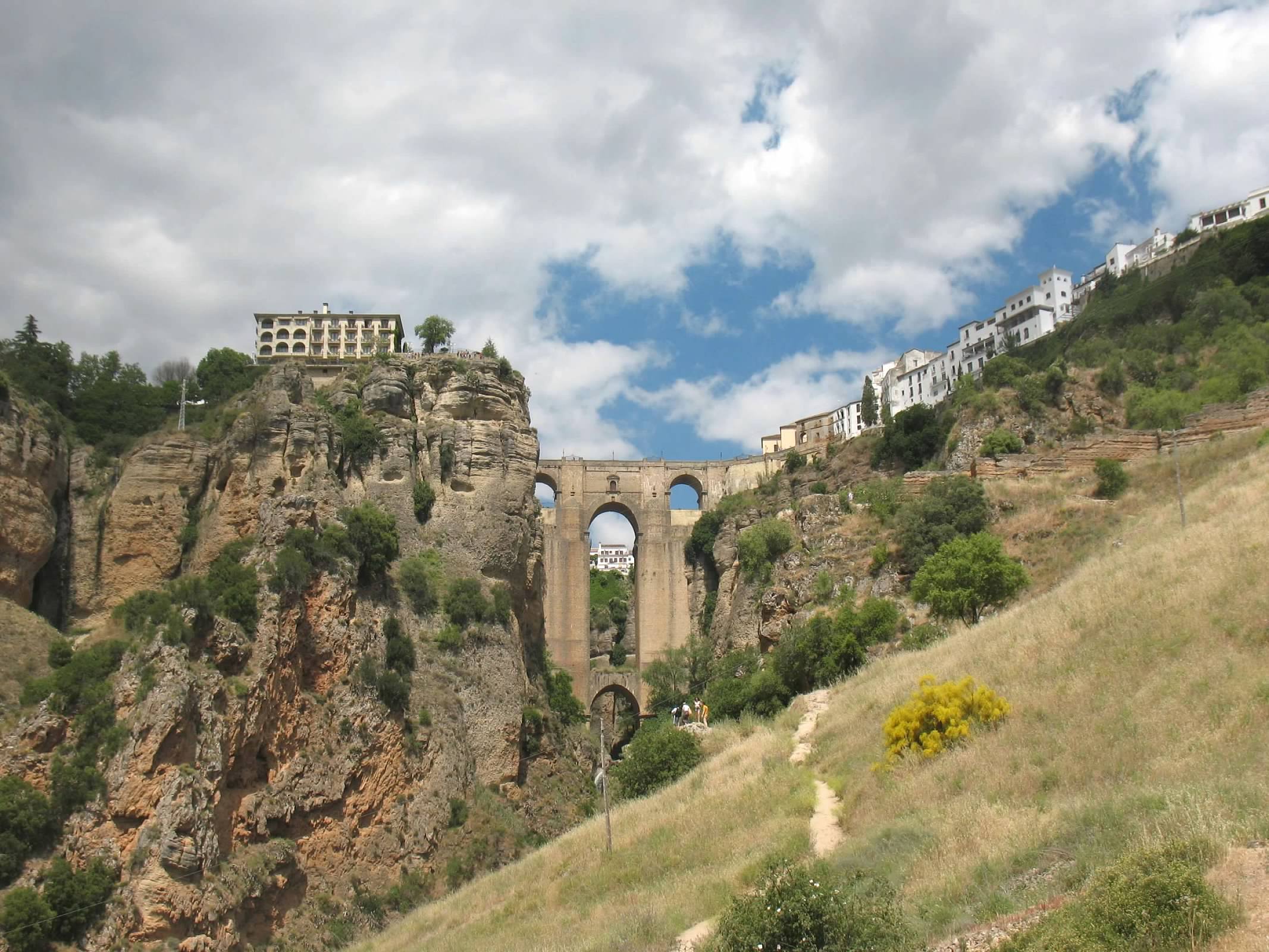
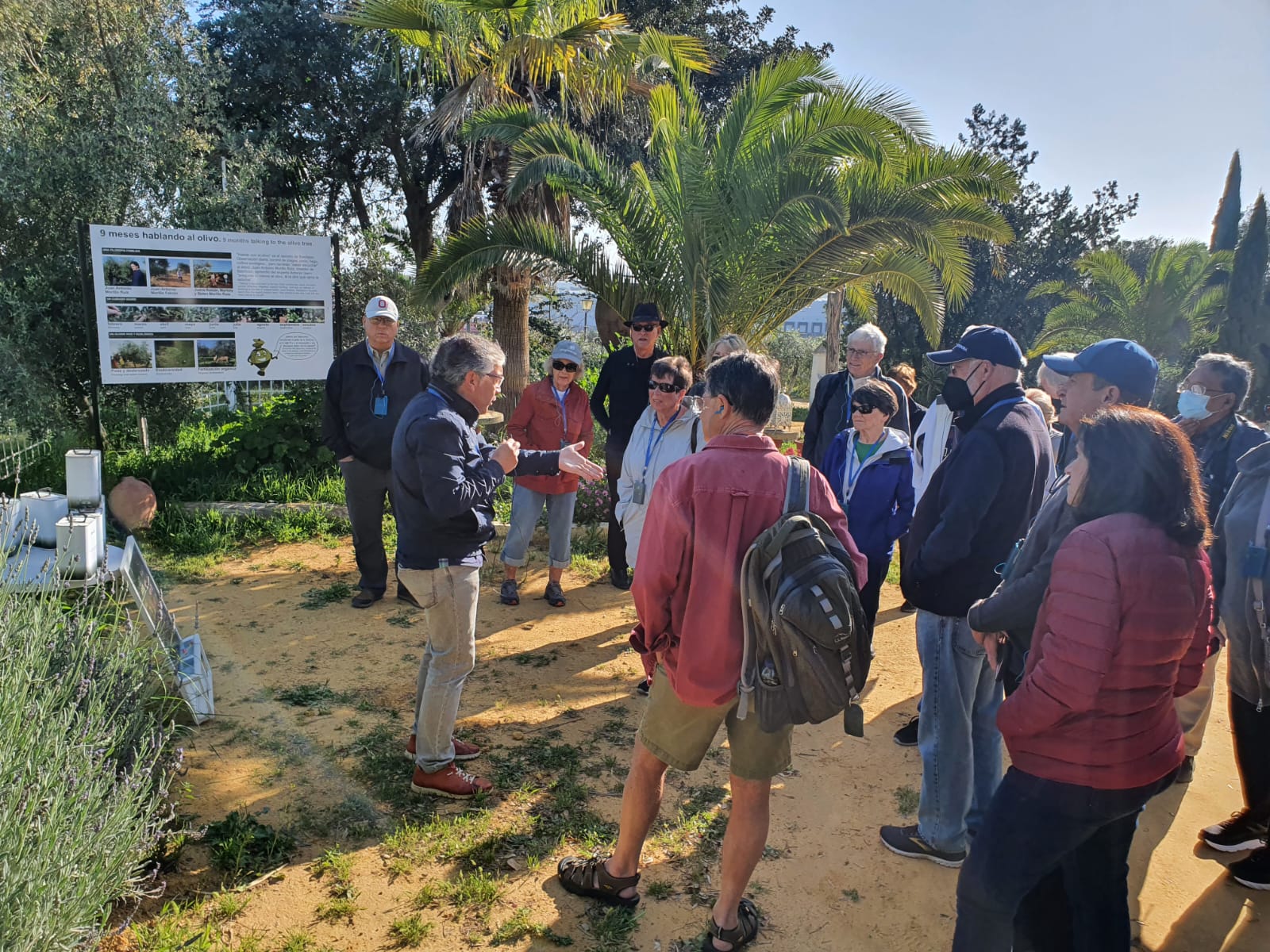
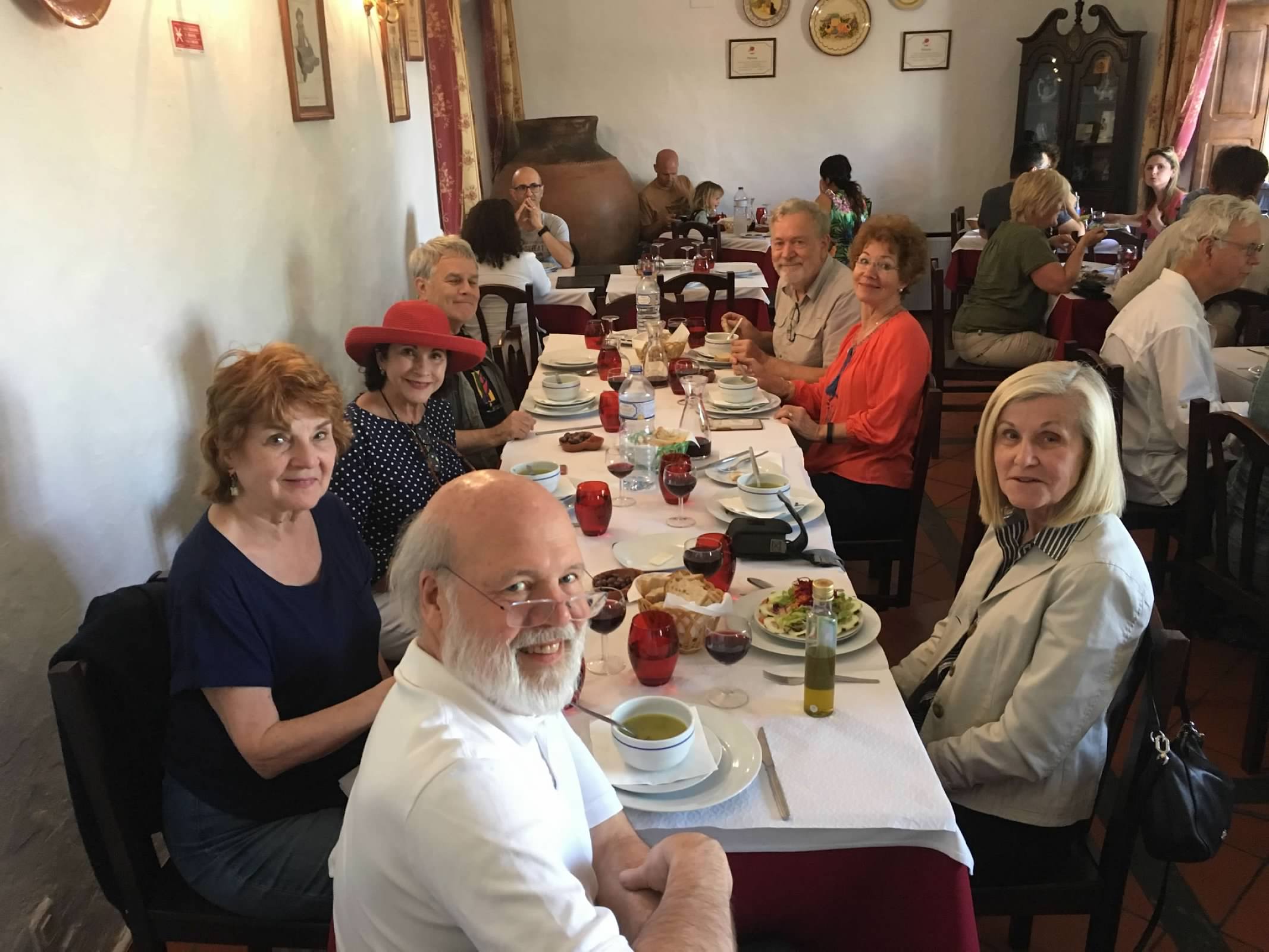

By using this website you are agreeing to our Cookie Policy.